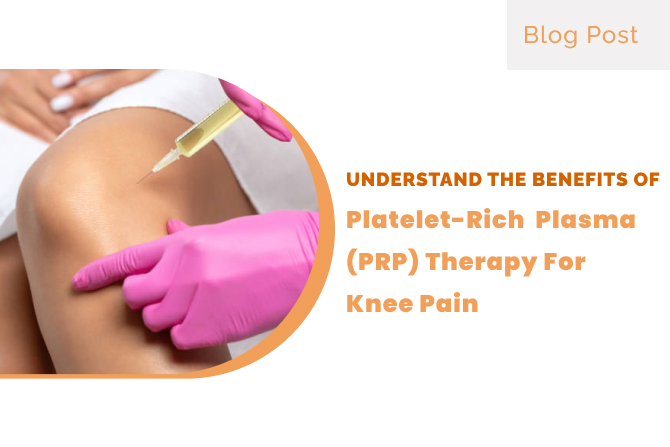Understand The Benefits of Platelet-Rich Plasma (PRP) Therapy for Knee Pain

Introduction to PRP Therapy
What is PRP Therapy?
Platelet-rich plasma (PRP) treatment involves the extraction and concentration of platelets from the patient’s blood, which are then injected into the affected area to facilitate tissue repair and regeneration. Platelets contain ripening factors and other bioactive proteins that contribute to an essential role during the healing process.
How Does PRP Therapy Work for Knee Pain?
When injected into the affected joint area, PRP releases growth factors that stimulate tissue repair, lower inflammation, and relieve pain. It targets the underlying cause of knee pain rather than merely masking the symptoms, making it a valuable therapeutic approach for various knee conditions.
Conditions Treated with PRP for Knee Pain
PRP therapy for knee has shown promising results in the treatment of various conditions, including:
- Osteoarthritis
- Tendon injuries (e.g., patellar tendonitis)
- Ligament injuries (e.g., ACL tears)
- Meniscal tears
- Bursitis
Effectiveness of PRP Therapy
Multiple analyses have revealed the effectiveness of PRP treatment in reducing pain and enhancing knee function. While individual responses may vary, many patients experience substantial comfort from symptoms and improved mobility following PRP treatment.
Benefits of PRP Therapy for Knee Pain
- Non-surgical approach: One of the most significant benefits of undergoing PRP for the knee is a non-invasive alternative to surgical interventions for knee pain.
- Reduced recovery time: Unlike surgical procedures, PRP therapy typically involves minimal downtime, enabling patients to resume their normal daily activities quickly.
- Natural healing: PRP uses the body’s innate therapeutic mechanisms to boost tissue repair, making it a reliable and endurable treatment option.
- Long-lasting effects: Platelet-rich plasma (PRP) therapy offers the potential for sustained alleviation of knee discomfort, potentially postponing or obviating the necessity for more invasive interventions.
Considerations Before Undergoing PRP Therapy
Before opting for PRP therapy for knee pain, patients should consider the following factors:
- Consult with a qualified healthcare professional or pain management specialist to determine your candidacy and discuss treatment expectations.
- Get the cost of treatment and insurance coverage. Please note that PRP therapy may not be covered under all insurance plans.
- Understand potential risks and side effects, such as infection, bleeding, or adverse reactions related to the PRP injection therapy.
